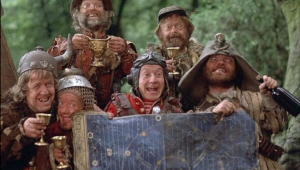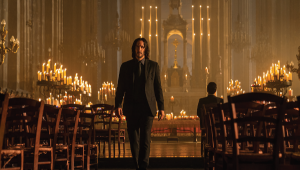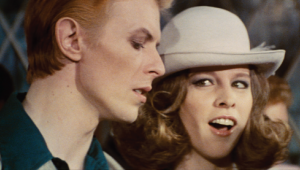Valerian and the City of a Thousand Planets
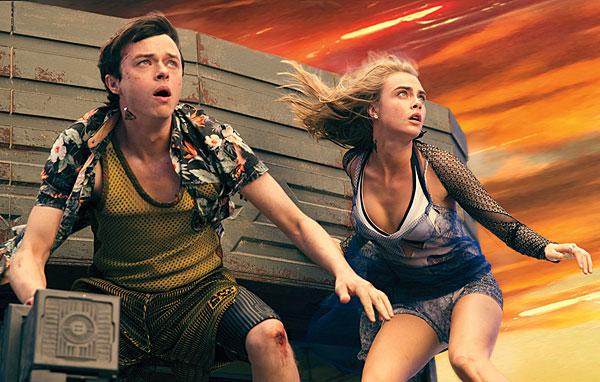
However, like Besson’s The Fifth Element, Valerian may thrive less as a sci-fi classic and more as a home theater demo disc. Valerian’s 2K digital intermediate was upscaled to 4K for Blu-ray, and it looks fantastic. The resolution itself isn’t markedly better than regular Blu-ray, but HDR, wide color gamut, and higher data bandwidth easily justify the upgrade. My Oppo disc player reported bit rates regularly above 50 Mbps with peaks above 70 Mbps during a sequence wherein hero Valerian bursts through different habitats. This is where physical media shines: Streaming services today won’t push that much data even if you pay for Gigabit Internet service.
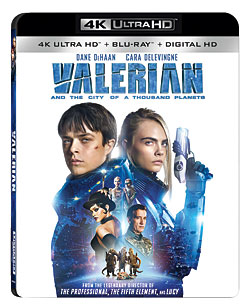 Valerian is one of the first discs to offer the Dolby Vision HDR format (all 4K discs will default to HDR10 if the TV does not support Dolby Vision). It allows much higher brightness peaks, but the TCL TV that Dolby lent me for review purposes does not approach those limits, so I wasn’t expecting to see major differences between Dolby Vision and HDR10 in that respect—and I didn’t. However, Dolby Vision also allows filmmakers to change the HDR effect from frame to frame, while HDR10 sets a single level for the film, and this made a dramatic difference. For example, in the opening sequences, astronaut uniform colors in HDR10 were oversaturated, and brightness peaks were low, allowing plenty of shadow detail on a giant alien spaceship.
Valerian is one of the first discs to offer the Dolby Vision HDR format (all 4K discs will default to HDR10 if the TV does not support Dolby Vision). It allows much higher brightness peaks, but the TCL TV that Dolby lent me for review purposes does not approach those limits, so I wasn’t expecting to see major differences between Dolby Vision and HDR10 in that respect—and I didn’t. However, Dolby Vision also allows filmmakers to change the HDR effect from frame to frame, while HDR10 sets a single level for the film, and this made a dramatic difference. For example, in the opening sequences, astronaut uniform colors in HDR10 were oversaturated, and brightness peaks were low, allowing plenty of shadow detail on a giant alien spaceship.
The same sequence in Dolby Vision had tamer uniform colors followed by brighter lights—and deeper blacks—on the ship. Both versions look amazing, but the differences between them are pronounced, and the Dolby Vision version better represents the director’s, er, vision for what each scene should look like.
The Dolby Atmos audio track doesn’t disappoint, either. The opening “historical” footage sequence starts in a 3:2 aspect ratio with David Bowie’s “Space Oddity” in stereo on the soundtrack. The visuals then expand to 2.35:1 and the music mix opens into all the Dolby Atmos speakers. (When 9.4.2 Atmos support starts appearing in A/V receivers next year, you’ll want to revisit this scene, as the music blooms into the front surround channels first.) There’s plenty of directional audio throughout the movie and distinct bass. When a planet is bombarded, the loud, room-shaking explosions appear to come from different parts of the room, a neat trick since deep bass isn’t usually localizable. The higher frequencies that go with the thuds are placed in different spots, and it’s an effective illusion.
The extras are underwhelming. Short featurettes show that Besson loves the source material and provides a glimpse into how much of the movie was CGI (nearly all of it). A 1080p Blu-ray and a Digital Copy code are included. The code is UltraViolet only; Lionsgate does not participate in MoviesAnywhere.
Blu-ray
Studio: Lionsgate, 2017
Aspect Ratio: 2.39:1
Audio Format: Dolby Atmos / True HD 7.1 core
Length: 137 mins.
MPAA Rating: PG-13
Director: Luc Besson
Starring: Dane DeHaan, Cara Delevingne, Clive Owen


